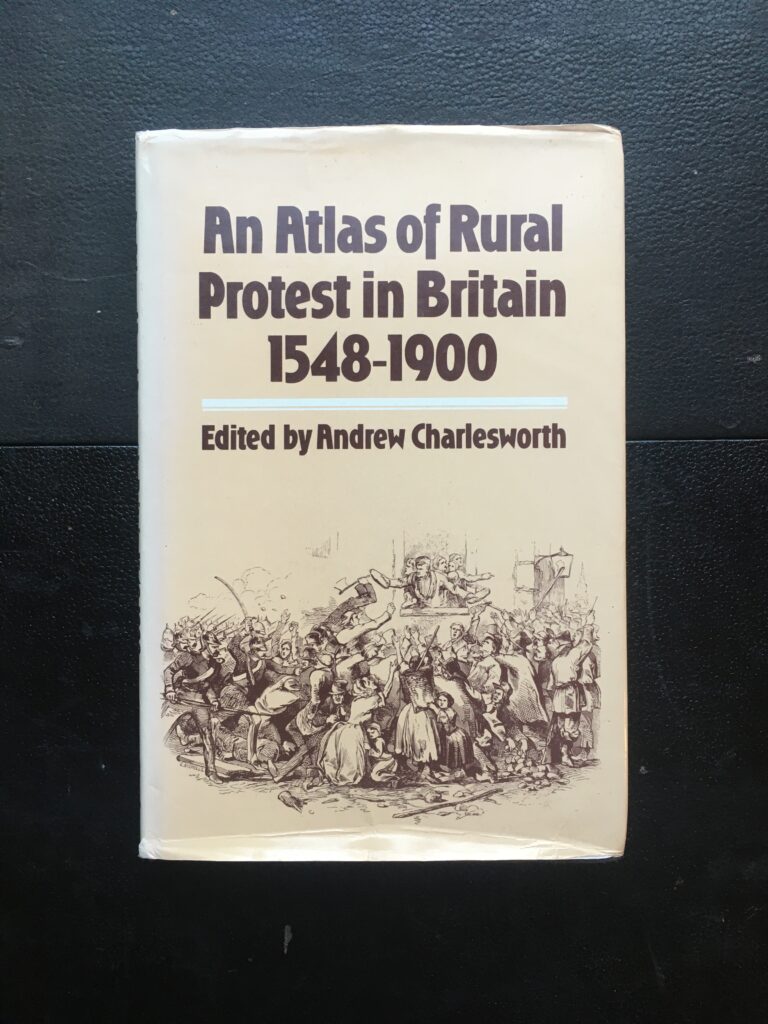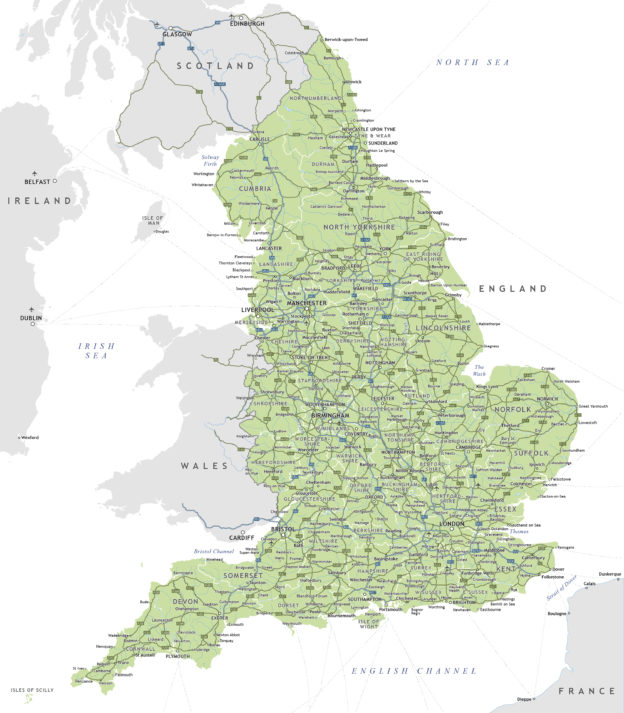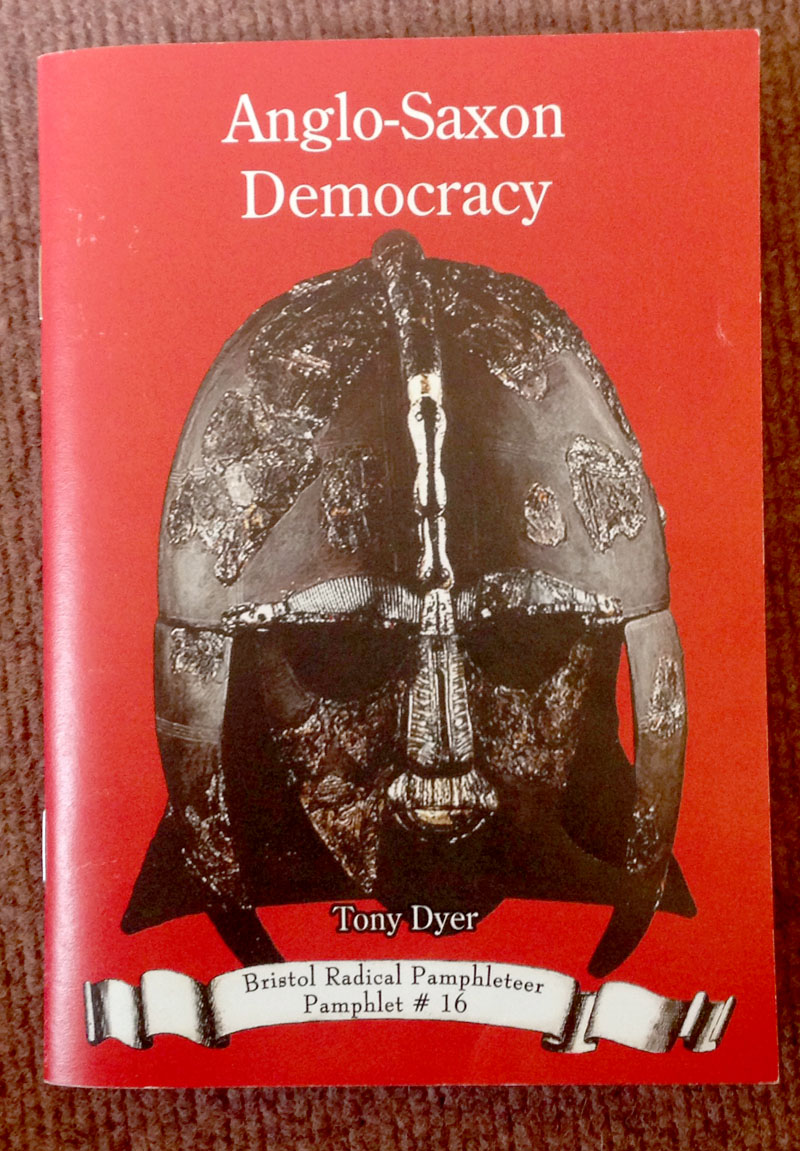Jack Hargreaves had a beautful way of talking about the world around him at a time when the urban and rural were becoming more and more divided. Many episodes of his ‘Old Country’ series can be found on Youtube and are well worth a look. This one on deserted villages, the black death and enclosures is as good a place to start as any.
Category Archives: Somerset
An Atlas of Rural Protest in Britain 1548-1900 by Andrew Charlesworth

We get sent, given and recommended a lot of books by people who’ve seen the show. They are nearly always very useful and often even get read. Every so often one comes along that wins. This is such a book. What a title! And full of lovely maps and considered prose too. Copies come up 2nd hand for about the £20 mark fairly often, well worth it.
Needless to say this book is a glorious source of academically thorough research into peasant struggles against the greed and tyranny of the aristocracy.
Alder Moor, Glastonbury
By Bruce Garrard
These days it is a common assumption that the ‘improvement’ of land is of itself a good thing; however, we should bear in mind that “the majority of commoners were opposed to draining, or to any alteration of the commons that did not benefit them; and, what is more, because of their large numbers they could make their wishes felt.”
Where the commoners were freeholders and relatively prosperous farmers, their opposition could be played out in the courts. Attempts to drain King’s Sedgemoor, for instance, continued from 1618 until well into the 1650s, when Sir Cornelius Vermuyden – the only Dutch drainage engineer who ever took a serious interest in the Somerset Levels – withdrew from the proposed project in frustration after endless litigation and delays, and continuing opposition from ‘the good opinion of the country.’
Where the commoners had fewer resources, and their ‘good opinion’ was less likely to be paid heed to, it was also true that their rights of commonage were all the more crucial to their survival. These included summer grazing for cattle and pigs; cutting of wood for firing, fencing and building; and peat cutting. Access to such resources could make the difference between life being tolerable and life being close to impossible. It was these common rights that were threatened by the enclosure and draining of the moors, and a particular case in point was Alder (or ‘Oller’) Moor, on either side of the River Brue just south of Glastonbury. It took its name from its particularly valued Alder groves.
Like much of the remaining Somerset wetlands, Alder Moor belonged to the Crown, having been part of the abbey’s estates until 1539. James I became king of England as well as Scotland in 1603, and “upon assuming power south of the border, the new King of England was genuinely affronted by the constraints the English Parliament attempted to place on him in exchange for money. In spite of this, James’ personal extravagance meant he was perennially short of money and had to resort to extra-Parliamentary sources of income.”
The financial difficulties of the Stuarts meant that on the one hand they were keen for land such as they owned on the Somerset Levels to be drained and sold, and on the other that they could not afford to invest in the reclamation themselves. The result was that the work would be made the responsibility of an agent, and that the only way the agent could take his percentage as payment was by taking possession of a portion of the land. This meant, in approximate round figures, that the best third of the land would provide an extensive and desirable farm that was a saleable asset belonging to the king; the second third would provide the agent with a worthwhile property for himself; and the last third, supposedly drained and improved, would be what was left available to the commoners.
James‘ son Charles I succeeded to the throne in 1625, and in the 1630s attention was paid to enclosing and draining Alder Moor. Instead of being “worth to the owners as much as nothinge,” it would now be “even the richest, worthiest and most notable feeding in all these parts.” However, it had also been described as “very large, capacious, fruitful marshes”. Far from being ‘as nothinge,’ its value to the commoners was huge; when the commissioners came to Glastonbury to order the digging of ditches, they were besieged in the house where they met by people saying that they “should be undone if the said moor was enclosed.” One of their number was charged with sedition as an example to the rest.
The scheme was going ahead against the will of the majority of local people, but the on-going difficulties with enclosing King’s Sedgemoor had hardened the attitude of the Crown and its agents. Furthermore the chief of the commissioners, Sir Robert Phelips, had been out of royal favour, and King Charles had made it clear to him in a personal letter that this would be rectified so long as “you will rather use your best endeavours and care for the preservation and increase of our ancient rent, and inheritance, than for the favour of the multitude.”
The enclosure and division of the moor thus went ahead. The ‘best and commodious part’ was retained by the Crown, and later sold for £1,000. The rest was distributed proportionally amongst the tenants from Glastonbury, Street and Butleigh, though tenants from Edgarley were entirely excluded. The drier parts of these allocations were then taken by the agents, whilst the remainder, the most frequently flooded areas, were returned to the commoners. The land taken by the agents was said to be wprth 20 shillings per acre whilst that allocated tpo the commioners was valued at only 12 pence; the access droves severed by the new rhynes. The alder groves, subjected to indiscriminate felling, had been ruined.
This moorland had formerly been ‘a great reliefe to the poor’; now, however, poverty was noticeably increased and many houses in Glastonbury, for instance, were soon in a state of decay. James Lovington, the gentleman farmer who had purchased the land from the Crown, did undertake to recompense Edgarley for its loss of commonage with one hundred acres. This land was never entrusted to the people of Edgarley however, for “the agents who handled the transfer then appear to have expropriated the ground.” Frustration and anger finally reached boiling point. “The commoners broke down the walls and fences, filled in the rhynes and stopped the flow of water, so that most of the moor … reverted to its original state.” Normal legal processes in relation to such relatively minor matters were then suspended since the civil war broke out, in 1642, and continued until 1651; so that “for the next nine years at least, the commoners of the four parishes pastured their cattle as of old, without hindrance.”
(1830) Eight shillings a week
Eight shillings a week
This dates from the winter of 1830, when starving farm-workers in the Southern Counties riotously demonstrated for a basic wage of a half a crown a day. They committed a breach of the peace but otherwise harmed no one, yet after the demonstrations three of them were hanged and over four hundred were transported. At that time a loaf of bread cost a shilling.
Come all you bold Britons where’re you may be,
I pray give attention and listen to me,
There once was good times but they’re gone by complete,
For a poor man now lives on eight shillings a week.
Such times in old England there never was seen,
As the present ones now but much better have been,
A poor man’s condemned and looked on as a thief.
And compelled to work hard on eight shillings a week.
Our venerable fathers remember the year,
When a man earned thee shillings a day and his beer,
He then could live well, keep his family all neat,
But now he must work for eight shillings a week
The nobs of old England of shameful renown,
Are striving to crush a poor man to the ground,
They’ll beat down his wages and starve him complete
And make him work hard for eight shillings a week.
A poor man to labour believe me ‘tis so,
To maintain his family is willing to go,
Either hedging or ditching, to plough or to reap,
But how does he live on eight shillings a week?
So now to conclude and finish my song,
May the times be much better before too long,
May each labouring man be able to keep,
His children and wife on twelve shillings a week.

Who Owns England blog – one year on
Guy Shrubsole is doing some excellent work here digging into data to find out who owns our land – https://whoownsengland.org/2017/09/12/who-owns-england-one-year-on-what-we-now-know/
Bristol Radical History Group pamphlets
 I have been really enjoying reading a number of pamphlets which I picked up recently from ‘Bristol Radical History Group‘ who seem to do a lot of great work down in the south west.
I have been really enjoying reading a number of pamphlets which I picked up recently from ‘Bristol Radical History Group‘ who seem to do a lot of great work down in the south west.
This one on Anglo-Saxon Democracy is of particular interest, although there are many others which I will write up at some point soon.
These few paragraphs are good food for thought, the italics in the last paragraph are mine:
———————————-
The Rise of the Church
If the major cause of the retreat of Anglo-Saxon democracy is the increasing use of charters to create bookland beyond the control of the local courts and thus the local community then it also has to be accepted that the use of charters to gain rights and privileges at the expense of the local populace was first introduced by the Roman Catholic church and all of the charters of pre-Conquest England were denrived from the form of the private charter of the later Roman empire. Continue reading

You must be logged in to post a comment.